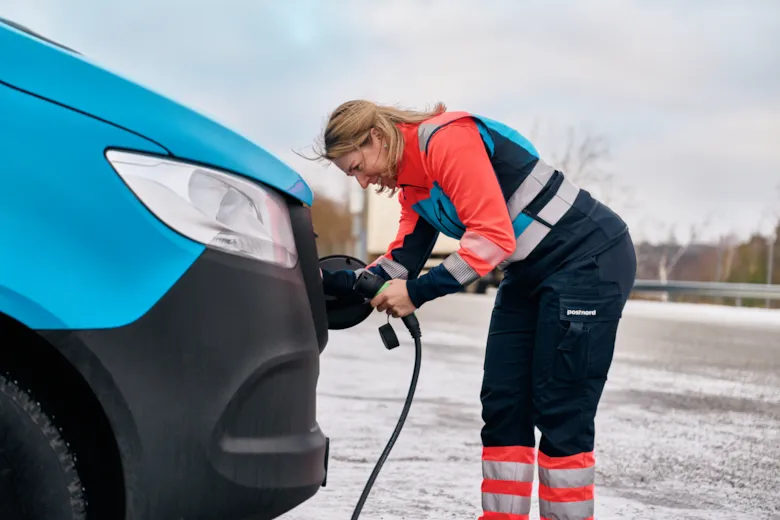An electrifying journey
We are on a mission, rapidly accelerating towards our ambitious goal of becoming fossil-free by 2030, with electrification as the critical driver.
The first target milestone is less than two short years away, and while there are challenges, the goal of achieving fossil-free transportation and operations by 2030 is being bolstered by electrification of the vehicle fleet. But what have we achieved and where is the journey headed?
 Nima Ghaviha, who is responsible for the electromobility center of excellence within PostNord’s climate transition program, puts electrification into perspective:
Nima Ghaviha, who is responsible for the electromobility center of excellence within PostNord’s climate transition program, puts electrification into perspective:
“The goal of becoming fossil-free goes beyond PostNord and the Nordics; our shift to electric and renewable fuel vehicles will have a ripple effect.”
“We aren’t just dealing with one part of the company or the Nordics; we are setting requirements and influencing the entire value chain including vehicle and equipment manufacturers and transport service providers.”
Industry collaboration driving change
Being an industry leader and sustainability game-changer makes commercial sense, and we are responding to customer demands and staying one step ahead of policy development. But to implement change across operations in each country, region, and city, we must adapt and work together with partners.
The roll-out of electric solutions and policies is varied across the Nordics. Low emission zones, charging infrastructure, and the size of operations of partners and subcontractors differ across Sweden, Norway, Finland, and Denmark. However, there are many similarities, especially in terms of client expectations. Within Green by PostNord, PostNord’s group-wide climate transition program, insights from all countries are shared. Nima explains:
“We know our B2B customers want to reduce their transport emissions and in the e-commerce sector, end customers also want sustainable solutions. PostNord has more resources compared to smaller actors to invest in electrification. However, we face challenges as well. Investing in electric vehicles is costly, and securing these vehicles is difficult because current production can't keep up with industry demand.”
“We know that if you aren’t sustainable, you won’t be a viable business. So, we are driving the change together.”
The impact of the measures is reflected in the latest figures.
We have reduced carbon emissions from our transportation and operations by 30 percent compared to our baseline year of 2020 and PostNord’s current light segment is made up of 39 percent electric vehicles.
A roadmap for commercial success
While there is no blueprint for a transition of this scale in the logistics sector, as one of the largest operators in the Nordics, we have the opportunity to shape the future. For now, combining a range of solutions is part of the answer. We are carefully putting all of the puzzle pieces together. Nima says:
“We are building the roadmap based on current and anticipated conditions. People think vehicle range is our main concern, but it is more about grid infrastructure and capacity and lead times to expand the grid, than securing the actual trucks.”
PostNord has many new electric trucks of the latest generation coming into the fleet, but the wait time has been problematic. When they arrive, these trucks will be tested on some of the longest routes – and we are quite confident the vehicles will be up to the challenge.
The short-term future and long-term goals remain the priority. Nima concludes:
“We are aiming for a high degree of electrification. At the same time, we have to use a mix of technologies and vehicles to meet our goals. Our light vehicles will be electric in the shorter term, but the wider fossil-free goal will also be met using renewable fuels like biodiesel. A big chunk of our fleet is already fueled by HVO100 and also biogas, contributing to our current end goal of being fossil-free.